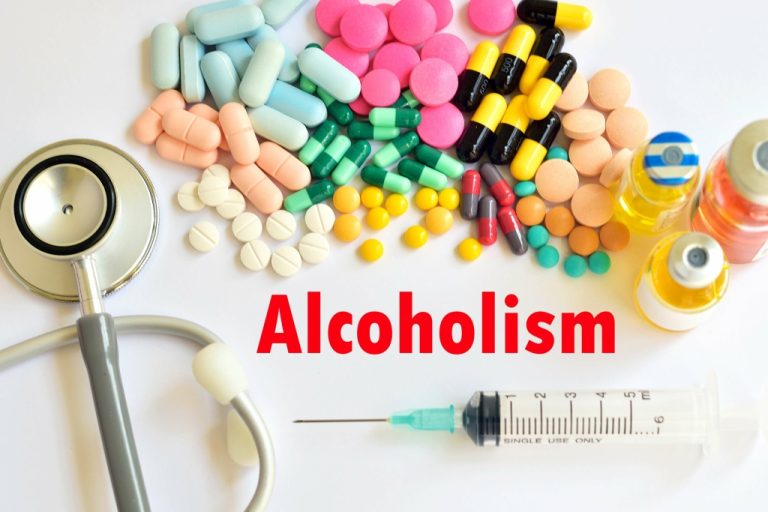The consensus panel also recommends that coerced individuals be mainstreamed with noncoerced clients where possible—such as in community settings—and should not be separated into different treatment tracks. Coerced treatment is much less likely to work if only similarly coerced individuals participate in the program. It is not always clear that treatment models are followed accurately (Farabee et al. 1999). A history of co-occurring mental illness, as demonstrated through a history of mental health system involvement, can have a significant negative effect on treatment retention. Roberts and Nishimoto (1996) studied retention in treatment among a group of women who were cocaine dependent, many of whom were under criminal justice supervision.
- Research shows that when treating addictions to opioids (prescription pain relievers or drugs like heroin or fentanyl), medication should be the first line of treatment, usually combined with some form of behavioral therapy or counseling.
- To understand this connection requires a closer look at the relationship between the criminal justice and treatment systems.
- Motivational enhancement therapy (MET) is a good choice for people not quite ready to make significant changes in their lives.
- Proper investment can help more people overcome the devastating effects of addiction.
- These situations require careful confrontation, limit-setting, and clear expectations with consequences by treatment staff.
- Concerns about legal jeopardy loom large among these motives and have been analyzed more extensively than all other factors combined.
- In this section, we’ll explore some inspiring examples of SMART goals tailored specifically for addiction recovery.
Offender Involvement in the Development of the Treatment Plan
- Originally created mainly to serve opiate addicts, the program soon became a common mechanism for diverting lesser drug cases, such as marijuana possession in small amounts, to avoid “clogging the justice system” with offenders who were nonviolent criminals.
- Estimated productivity losses owing to drug problems add up to an impressive figure.
- Outlining these basic informational areas is the first step to producing a precise, comprehensive substance abuse treatment plan.
- Whether addiction is addressed in a residential program, an outpatient program, a doctor’s office, online, with any kind of support service or group, or on one’s own, with or without the assistance of medication—and often, many modalities are used—there are a number of elements essential to effective care.
- Each stage of addiction treatment aims to help a person with substance use disorder achieve specific goals.
Treatment goals also vary because social concerns with different elements of drug problems differ over time and across institutional settings. When patients feel their voice is heard and valued, they may be more likely to feel hopeful about their addiction treatment. With a common goal in the contract, the patient may also feel more motivated to engage in treatment and feel confident in their progress.
Examples of Goals and Objectives to Include

While many of the factors that correlate with treatment dropout cannot be altered, the consensus panel suggests that some changes to treatment programs can be developed based on these studies. For one, there seems to be general agreement that a client’s friends can have a good deal of influence on whether that person will successfully complete treatment. Developing positive peer networks should therefore be a priority for retaining offenders in treatment. People may deny criminal activity even if they have dealt with their substance abuse. Just because an offender is in recovery from substance abuse does not mean he or she has ceased criminal activity.
What medications and devices help treat drug addiction?

Individualized treatment plans should consider age, gender identity, race and ethnicity, language, health literacy, religion/spirituality, sexual orientation, culture, trauma history, and co-occurring physical and mental health problems. Such considerations are critical for understanding the individual and for tailoring the treatment to his or her specific needs. Residential treatment in a live-in facility with 24-hoursupervision https://www.celine-bags.org/luxurious-slumber-bags-for-girls-and-boys-for-gift/ is best for patients with overwhelming substance use problems who lacksufficient motivation or social supports to stay abstinent on their own but do notmeet clinical criteria for hospitalization. Many residential facilities offermedical monitoring of detoxification and are appropriate for individuals who needthat level of care but do not need management of other medical or psychiatricproblems.

- Substance abuse affects people from all demographics who have varying habits and experiences.
- While historically the great majority of treatment has occurred in specialty substance use disorder treatment programs with little involvement by primary or general health care, a shift is occurring toward the delivery of treatment services in general health care practice.
- The longer the time period between the undesired behavior and the consequences, the less effective the consequences.
- It is also important for offenders to have appropriate role models who have overcome the stigma of a criminal past and a history of substance abuse in order to achieve something in their recovery.
- Many major life problems, such as addictions, are life-long problems, requiring continuing work by the individual.
It may, however, be most critical in community supervision settings if clients are engaged in outpatient treatment. In residential programs, such as therapeutic communities, peers play a larger part in the treatment experience, and the client’s relationship with his or her peers is http://www.alrage.ru/player_info.php?nick=Gimlis often as important as or more important than the relationship with the counselor. While substance abuse treatment providers often are trained to view denial as a negative symptom of the offender’s addiction, denial may be a necessary strategy to further the offender’s legal goals.
The current article is one in a series that targets core processes of addiction therapies and operationalizes each process in a manner that research can assess fidelity (i.e., adherence), and ultimately proficiency (i.e., competence). The prior processes reviewed were skills training (Magill et al., 2020) and psychoeducation (Magill et al., 2021), and here we examine goal setting and monitoring. In future work, we will examine developing a working relationship and working with naturalistic support systems. For each process, there is a systematic review and qualitative content analysis to develop a meta-model based on existing sources, such as literature reviews, therapy manuals, government-issued practice guidelines, and therapy demonstration videos. For Chorpita, the term practice element (PE) is used and for Michie, it is a behavior change technique (BCT).
Residential treatment
- People in recovery can use step-by-step goal setting to increase their chances of success.
- In particular, the attention of EAPs to mixed alcohol and cocaine problems coincided with the addition of drugs to the scope of the private tier of alcohol treatment providers, with widespread and often highly publicized offerings of combined treatment (chemical dependency) protocols.
- Unlike ordinary sadness or grief, which can occur temporarily after a loss, the symptoms of depression occur nearly every day for weeks—sometimes months or years—interfering with all aspects of an individual’s life.
- These DSP results are not necessarily representative of overall employee of applicant drug consumption patterns.
- While legal pressures may be sufficient to get a client into treatment, engagement is necessary if the client is to become motivated to commit to change and maintain recovery (Hubbard et al. 1988).
Some join peer support groups, like AA or NA, that are areligious and facilitated by other people in recovery. At the same time, you learn new coping mechanisms and identify the thought patterns that led to non-productive behaviors.8 You also learn strategies for maintaining long-term recovery, such as relapse prevention tools. Uncomfortable and sometimes medically significant withdrawal symptoms can occur when people stop using the substance.1 Withdrawal symptoms and cravings make it hard to break the cycle of addiction. The offender should be involved in all major aspects of the treatment planning process. Just as families have found ways to adapt to an individual’s addictive behavior, they have to find ways to facilitate the healing process and support that person’s healthy behavior. That can require some degree of reorganizing their focus and behavior patterns, restoring mutual trust, repairing ruptured relationships, and learning about substance use and recovery.
It was generally based in a central office and had its own credentialed specialists affiliated with the personnel or health department of a firm or union. SMART recovery goals that are measurable include answers to questions like “how many” or “how much.” For example, “I will eat healthier” is not a measurable goal, because it can be hard to track whether a person is eating more nutritious foods than they used to. Instead, a person may want to try saying “I will eat one serving of vegetables every day.” Setting specific and measurable goals during recovery helps a person tell for sure whether or not they are meeting their goals. Further, studies have shown that learning how to set effective goals can help people reduce drinking and drug use. You may also choose to start seeking support through your local or spiritual community instead of participating in formal addiction treatment immediately.
Care during the acute phase addresses the physiologic effects of stopping a biologically active chemical. Continuously monitor your progress and reassess your goals as you move forward in your recovery journey. Stay accountable to yourself and seek support from others to stay http://delenadiaries.com/moderka/page,1,5,999-citatnik-dejmona.html motivated and focused. By identifying triggers and adopting effective coping strategies, individuals can navigate challenging situations without resorting to substances. Ensure your specific goal is achievable based on your circumstances, resources, and capabilities.







